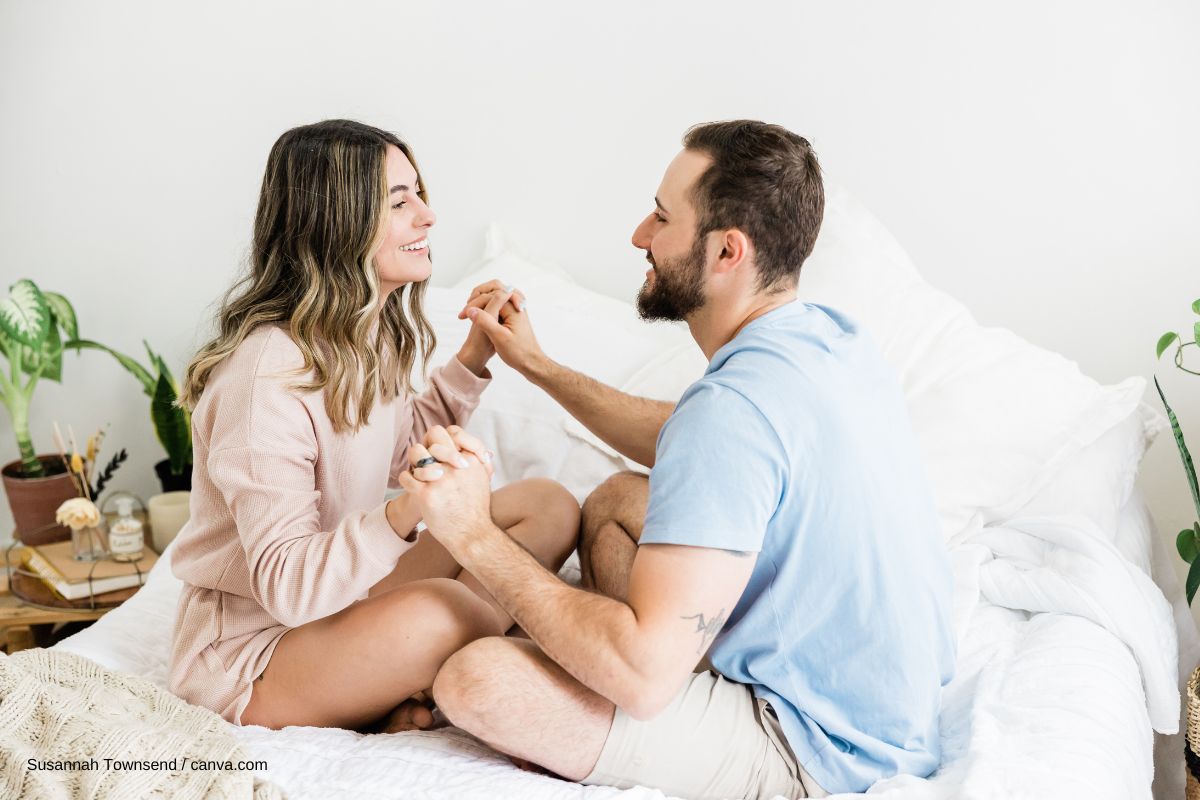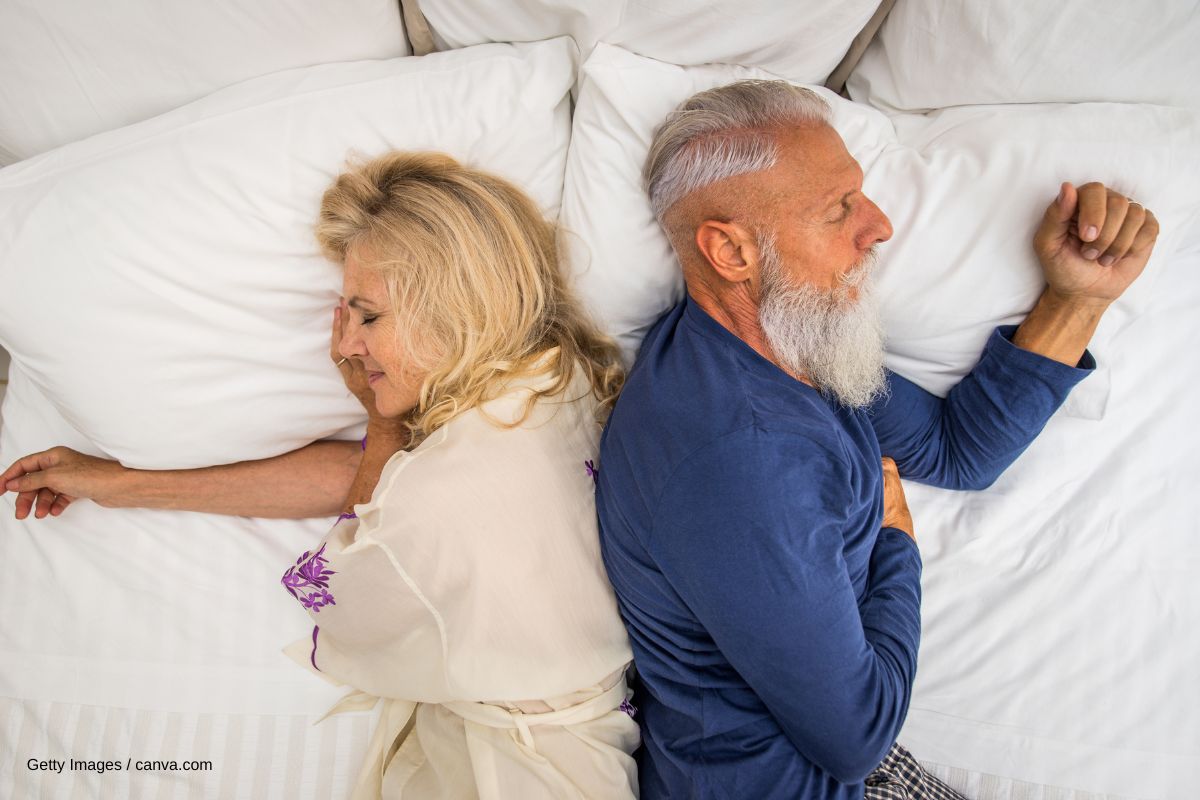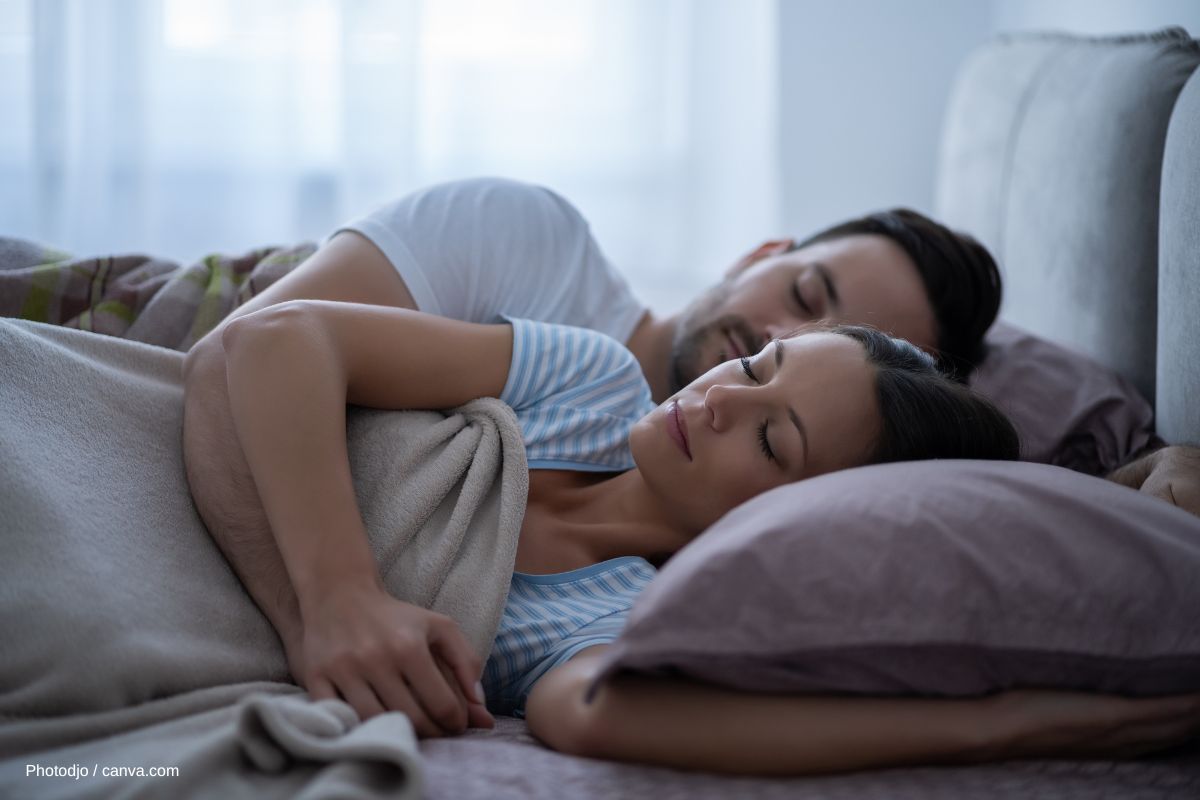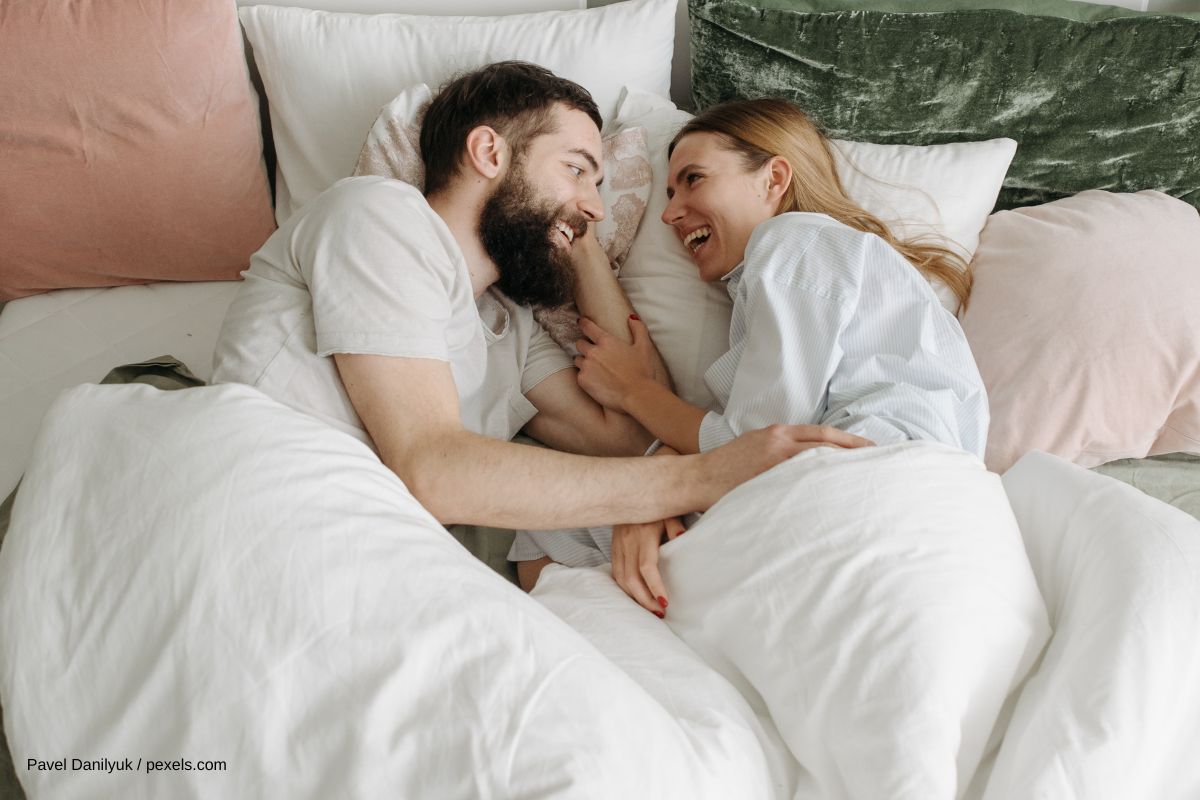Interpreting sleeping positions as a couple

You're wondering why you should look into sleeping positions as a couple if you're in a relationship? It's simple: The latest research findings can offer you interesting conclusions about the happiness of your relationship. An English study looked at sleeping positions as a couple - and according to it, unconscious body language while sleeping speaks louder than a thousand love vows. Find out now why happy couples prefer certain sleeping positions and what can be said about the stability of your relationship based on your favorite sleeping position.
Can the sleeping positions as a couple be interpreted?
Anyone who sleeps in a double bed with their favorite person should think about their sleeping positions as a couple. Researchers at the University of Hertfordshire in England have derived interesting findings about the future happiness of two people in a relationship from the way they fall asleep together. According to the study, the search for or avoidance of physical contact provides information about whether the couple relationship is stable or whether dark clouds will soon gather on the love horizon.
It's a fascinating topic, especially because we don't consciously control our body language during the night. What does your subconscious tell you about the state of your relationship? Of course, your own feelings and intuition should always decide how you judge your partner. Nevertheless, the scientific findings on the sleeping positions of partners make you curious: Do they confirm your own assessment of your relationship? Find out what your favorite sleeping position as a couple means from a scientific perspective.
V-position: Autonomous and harmonious
If you look at the various sleeping positions of couples, this one wins hands down: The vast majority of couples in Western cultures sleep in the so-called V-position. They lie back to back, touching each other at certain points. Sometimes couples lie butt to butt instead – they assume the so-called X position.

However, this variation can be interpreted in the same way as the original position: If you and your better half fall asleep back to back, you both appreciate freedom and autonomy in your relationship. But what at first seems rather unromantic is actually a solid basis for shared happiness. Instead of mutual dependence, your relationship is based on appreciation and respect. You consciously choose each other and give the other enough freedom in the process.
Some couples who otherwise fall asleep differently adopt the V position after an argument. Here, they don't have to look the other in the face – but keeping physical contact at the same time signals that affection is still there, which speaks for an imminent reconciliation.
Lined up: Freedom loving and trusting

In the "Lined up" position, both partners lie on the same side, keeping a little distance between them. The person lying behind the other keeps light physical contact with their hand to the one in front. Research attests that such couples have a solid relationship: they give each other enough space without one being too clingy. Nevertheless, the gentle touch represents the great trust and tenderness that exists between the two. This sleeping position is often found in couples who have been together for a long time.
One variation is the well-known "spooning" position, in which both partners maintain close physical contact and one embraces the other from behind. The embrace during sleep indicates that the relationship is harmonious. The person lying behind usually feels like the protector. If, on the other hand, the person clings too fiercely, it may indicate a dominant streak: He or she literally wants to have the other person "under control."
Protected: Desire for shelter and protection
Researchers can read couples' desires well on the basis of some sleeping positions. One such is the "Protected" sleeping position, in which one person lies on their back and encloses the person nestled against them with their arms, while the latter rests their head on the chest or shoulder of the partner lying on their back.

A desire for protection and security come into play here. The partner lying on their back wants to protect their better half, while the latter wants to feel safe and secure. Generally, this sleeping position shows that everything is fine with the relationship. You should only be careful if your partner ignores you when you snuggle up to him or her - this can show you that there is a difference in the need for closeness in the relationship. Unfortunately, conflicts are inevitable later on.
Tangled: Intimate and intoxicating
The sleeping positions of newly in love couples often look as if both partners are tied together in a knot, so to speak. They turn their faces toward each other and wrap their arms and legs around each other. Researchers don't have to puzzle over this for long either: These individuals have a strong desire for intimacy and experience intoxicating and passionate love. In couples who have been together for a long time and still fall asleep "tied in knots," this may indicate an emotional dependence – but also that the passion has not yet faded despite all these years and that both are a perfect team.

Top dog: selfishness and submissiveness
Not all sleeping positions predict long-lasting happiness for couples. If, for example, one partner acts as top dog and almost banishes the other from the bed, this indicates strong egoism. The other partner, who has to make do with the remaining space, is often submissive and lacks self-confidence. Although the quality of sleep can suffer from a lack of room to move, the person often does not demand more lying space. The fact that no physical contact is made by either partner also suggests a relationship that has cooled down and may be on the verge of ending.
What is the most common sleeping position as a couple for you? The most important point is that you both feel comfortable and can enjoy a good night's sleep. After all, when you're well rested, it usually makes things better for the entire household, too 😉.
Photo credits:
Susannah Townsend / canva.com
Getty Images / canva.com
Photodjo / canva.com
Artem Peretiatko / canva.com
Pavel Danilyuk / pexels.com
